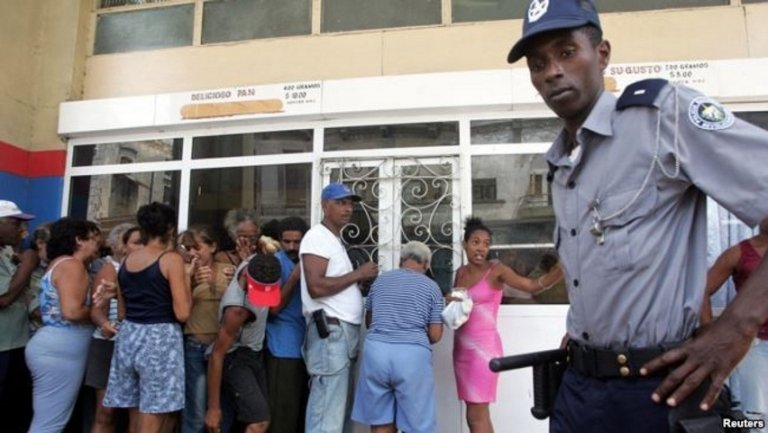
![]() 14ymedio, Carlos Alberto Montaner, Miami, 24 May 2019 — Is the cup half empty or half full? It depends. According to Bernie Sanders, 1% of society is enriched exponentially while the poor, 40 million Americans, 13% of the census, lack the resources to have a dignified life.
14ymedio, Carlos Alberto Montaner, Miami, 24 May 2019 — Is the cup half empty or half full? It depends. According to Bernie Sanders, 1% of society is enriched exponentially while the poor, 40 million Americans, 13% of the census, lack the resources to have a dignified life.
Is that true? It also depends on what one calls a “dignified life.” Poverty in the United States is measured by income. A family of 4 people with less than $25,000 a year is considered “poor.” But poverty is relative. That family has a home and public schools. As a benefit, they can acquire food without cost. Electricity, telephones, drinking water, internet. Cars and paved streets. Police protection and a judicial system with public defenders representing victims and victimizers.
At the same time, unemployment in the United States continues to decline. That is magnificent. It continues to be the country of opportunities, as determined by the flood of legal or illegal immigrants who arrive annually. However, a CEO or President of a major company earns in a year 312 times what an average employee receives. That is problematic and is reflected in what is called the Gini Index: the richest 20% of the nation gets much more wealth than the poorest 20%.
Corrado Gini was an Italian statistician, a fascist, who in 1912, more than a century ago, designed a formula to establish the division of income among the quintiles of any society. (With the years and the attacks the mathematician abandoned fascism). Supposedly, the Index or Gini Coefficient measures the equity or equality that reigns in the country subjected to the analysis. Roughly speaking, the most egalitarian region is Scandinavia and one of the most unequal is Latin America.
There are so many variables — cultural, geographical and historical — that present real conceptial obstacles to converting these variables into reliable indexes of inequality, which the demagogues wield constantly. “El Gini” is almost useless. Two of the most “unequal” nations are, precisely, Panama and Chile; two of the region’s nations that have seen the greatest growth and that are closest to full employment.
But, when one proudly shows what is happening in Chile, the adversaries are quick to cite the rancorous fact that Chile and Panama have Gini Indices exceeding 50, when the Scandinavian countries are under than 30. The way this coefficient works, zero would be absolute equality and 100 total inequality. Cuba, a country in which almost everyone lives miserably, ranges in the 40s and most of its population dreams of settling in Chile or Panama, let alone in the United States, whose “Gini” is 45.
Perhaps the Human Development Index published annually by the United Nations is more reliable, as it is more complete. It considers three factors: per capita income levels, schooling levels and life expectancy. The Spanish economist Leandro Prados de la Escosura, quoted by Juan Ramón Rallo, another leading economist, measured the inequality between countries from 1870 to 2015 and found that, although the inequality within populations was increasing as far as monetary income was concerned, it was decreasing with respect to education and life expectancy. (The review of the work of Prados de la Escosura by Rallo can be found at The Cato Institute).
_________________
The 14ymedio team is committed to serious journalism that reflects the reality of deep Cuba. Thank you for joining us on this long road. We invite you to continue supporting us, but this time by becoming a member of 14ymedio. Together we can continue to transform journalism in Cuba.
